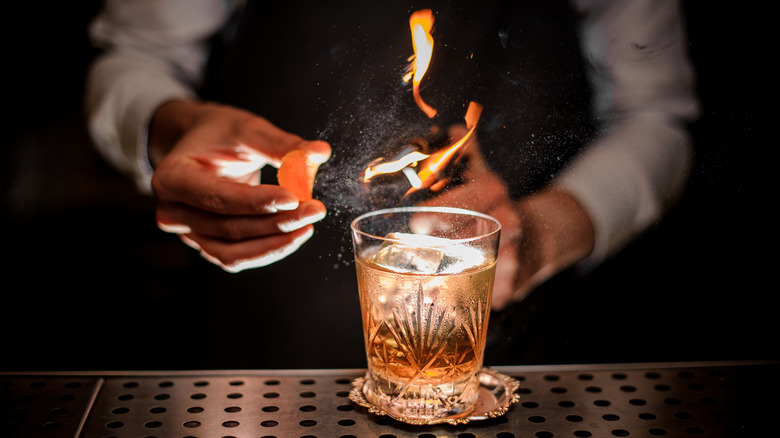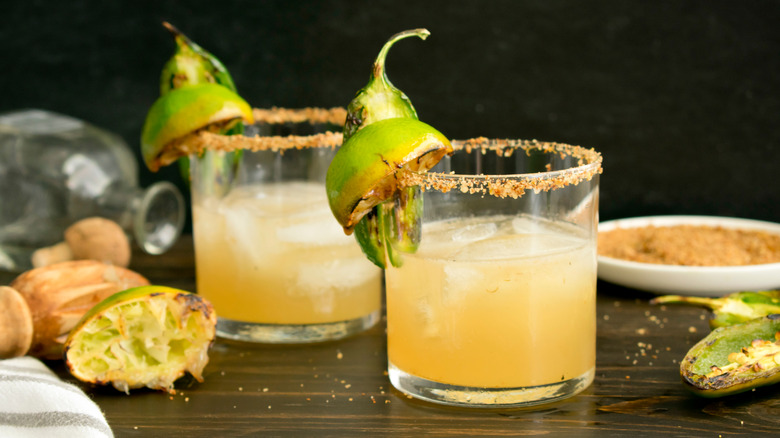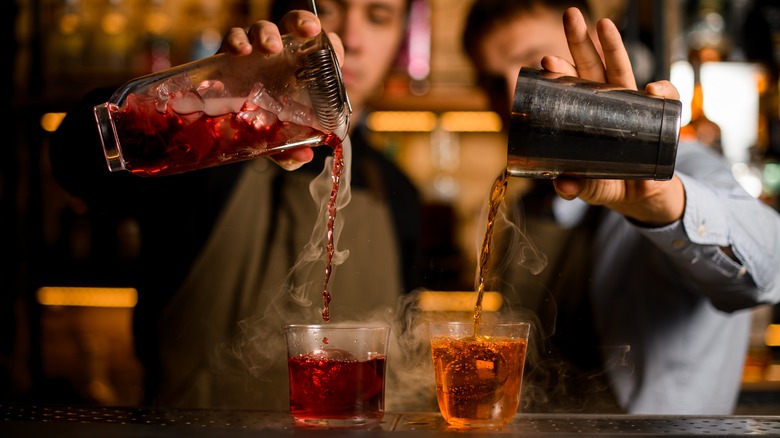The Safest Way To Char Garnishes For Smoky Cocktails
A good rule of thumb for kitchen safety is to keep your alcohol and your fire separate. Some celebrated dishes and drinks are worthy exceptions to this rule, but the general idea holds merit. However, if you're a mixology enthusiast looking to up the ante on your home cocktails, you may consider incorporating smoke and fire into your repertoire. Safely and deliciously, of course. How do you imbue smoky notes into your drinks responsibly and deliciously? Ensure you're not inadvertently contaminating your drink by adding unpleasantly acrid or toxic elements to your drink, find flame-resistant surfaces to work on, remove flammable objects from the area (where possible), and avoid charring under the influence.
Charring the garnishes you use in a cocktail expands the range of flavors at your disposal, allowing you to incorporate sultry, smoky notes into your drinks without opening you up to too much risk. However, safety is still the top priority — know your limits and avoid lighting things on fire when inebriated. Nothing ruins the vibes at a cocktail party like an injury or house fire.
Which garnishes should you explore?
The general idea is to take something fragrant that compliments your drink of choice, then expose it to fire to elevate this aspect and transform it into something new. What might that look like, and what drinks would pair well with these garnishes? So glad you asked.
Sprigs of woody herbs like lavender, lemon verbena, and thyme are great for charring because they can handle a little heat without completely surrendering to it as tender herbs would. Simply light your chosen sprig on fire, blow it out, and garnish your cocktail to your liking. It's super simple and very low-risk. The deep, earthy notes of charred rosemary and sage pair well with scotch, whiskey, and bourbon — try adding it to a lower-proof old fashioned or a highball. The smoky, floral notes of charred lavender go great with gin, like in a Bee's Knees or a Negroni Bianco.
Citrus is also a fun element to experiment with. Strike a match, hold it near the glass, and then squeeze a strip of orange or lemon peel into the drink, making sure expressed oils pass through the flame. Be careful: The proximity of fire and alcohol can be a risk. Another option is to slice your citrus into rounds and grill them until charred; the fruit's sugars will caramelize, and the grill will impart a smoky flavor, both of which can elevate cocktails like a jalapeño margarita or a Sazerac.
Garnishes to avoid charring
While some smoky garnishes add stunning dramatics to a drink's presentation, you want to be sure you aren't garnishing with something that will overshadow it or, worse, accidentally contaminate it. One garnish that carries such a red flag is incense. While a smoky beverage with a stick of incense sticking out is visually appealing, it may make your beverage and glass too fragrant and distract from the intended experience. Moreover, inhaling incense smoke and possibly getting its ash in your drink can be dangerous.
While cinnamon is a great cocktail ingredient — and a regular cinnamon stick makes a great garnish — charring one may not be the best strategy. Again, the fragrance is appealing, and the presentation is alluring, especially during the cooler months and holiday seasons. However, the scent may overpower your drink, and the charred tip has the potential to retain its heat longer than the previously mentioned garnishes, posing a potential burn risk. Remember: The goal is to create garnishes that enhance and elevate your beverages, not steal the show, make you sick, or pose a burn risk.



